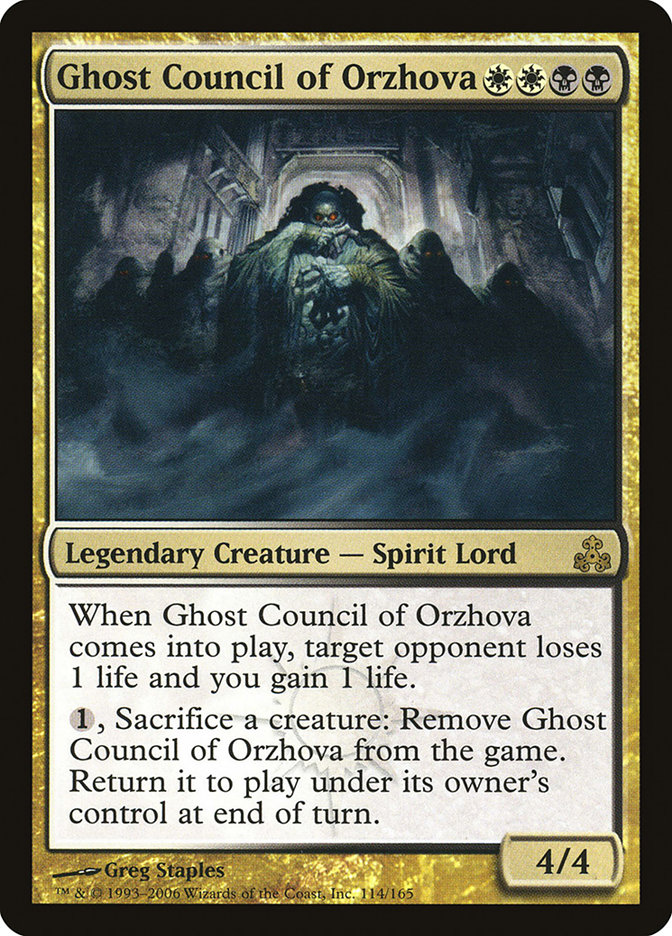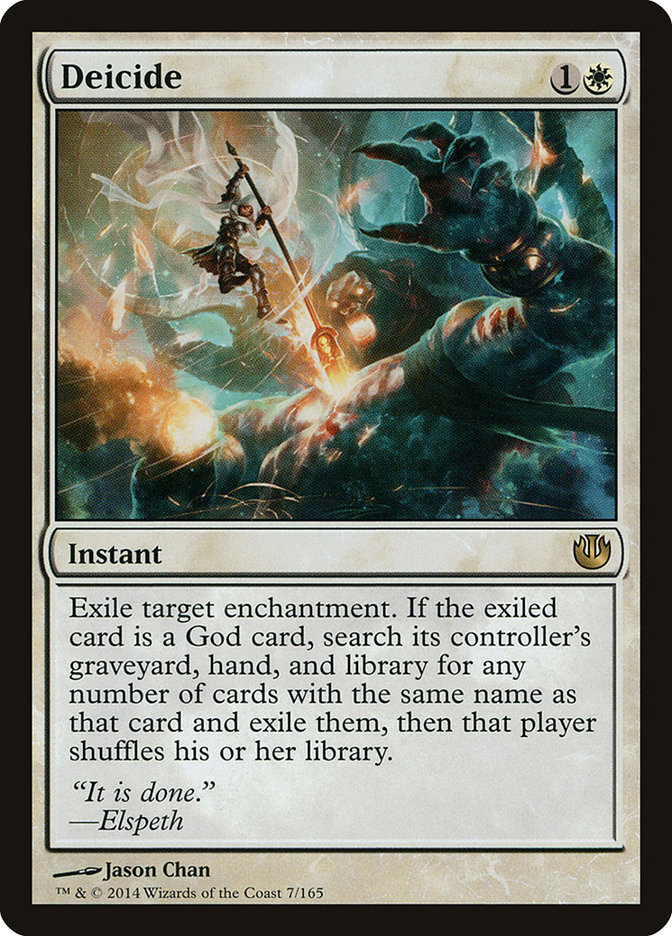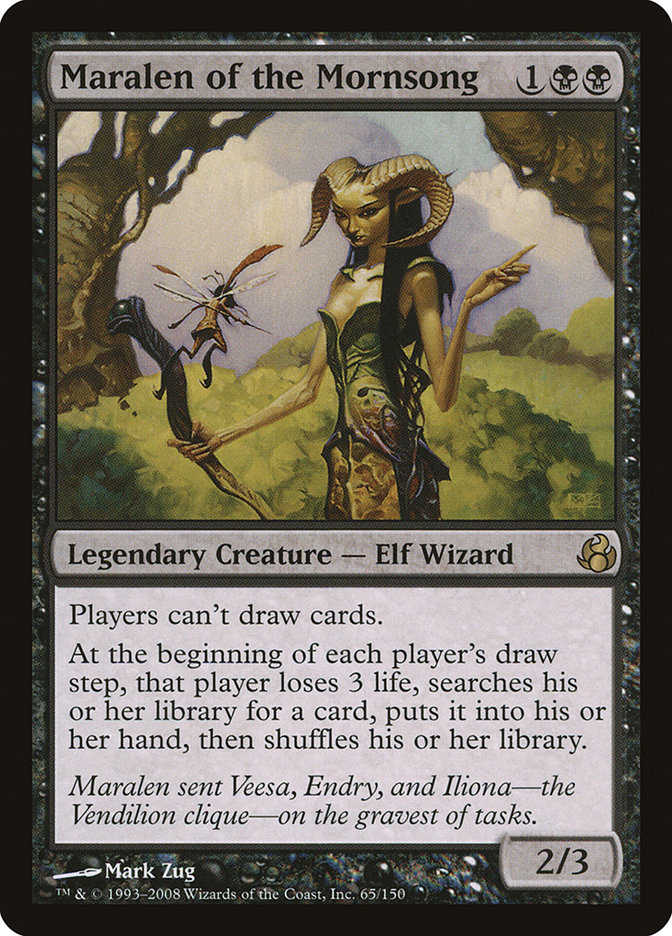Act I: Exposition
In Western modes of storytelling, particularly those based on a stage performance (think theater or opera), it is convenient to think of stories in terms
of “acts.” In casual terms, an “act” is a period of action that ends either right before or right
after a major turning point in the story.
A work can have any positive number of acts, but the most commonly seen numbers are two (musical theater geeks and intermission-time concessionaires know
this one well), three (the famous “three-act storytelling” prized by screenwriters), five
(Shakespeare’s jam and that of many of his contemporaries), and so on. Just by looking at the mathematical pattern, I’m sure there’s a famous seven-act work out there, but I can’t think of it
at the moment.
At any rate, Magic’s storytelling is set to shift dramatically. The “three-act structure” of Magic, where each set is an act, will be replaced by a two-act
structure starting with Battle for Zendikar. I’ll look at those changes and explore how they may affect Magic’s storytelling in the near future.
Before we go any further, a warning: the rest of this article will be one massive spoiler for many corners of Magic’s storytelling. Continue without fear,
or not at all.
Real-world flavor text:
requiescat in pace
.
Act II: Rising Action
Three-act structure (Magic’s past and present) and two-act structure (Magic’s visible future) are tried-and-true approaches to storytelling. Mark
Rosewater’s background in the field, including his work ona certain television show of the late 1980s and early 1990s that he’s written about, is deep and includes collegiate theoretical
experience as well as the hands-on stuff. Three-act storytelling is Mark Rosewater’s specific niche, as he’s a screenwriter.
However tried-and-true the approaches are, though, both are relatively recent developments. Shakespeare, for instance, almost invariably works through a
five-act structure, as that was the norm in Elizabethan times and for a century after. To give an example of how Shakespeare told stories, here’s an
informal breakdown of Hamlet:
Act I: Exposition.
We meet Hamlet and the crew. At the end of Act I, Hamlet’s encounter with his father’s ghost, in which Ghost Daddy says Hamlet’s uncle is actually Murder
Uncle, gets the story ball rolling.
Act II: Rising Action.
Hamlet freaks out, which is diagnosed incorrectly as love-sickness. At the end of Act II, Hamlet sets up a trap for the accused Murder Uncle.
Act III: Climax.
Murder Uncle gives himself away at the play, proving Ghost Daddy right. At the end of Act III, Hamlet shanks an eavesdropping courtier, earning himself a
one-way ticket out of the castle.
Act IV: Falling Action.
Hamlet has a face-off with Murder Uncle before he peaces out. Murder Uncle later reveals a plot for Hamlet to be offed at the end of his one-way voyage. At
the end of Act IV, it’s clear the plan didn’t work (pirates, yo) and so Murder Uncle deploys his next plot: poison and a fencing match.
Act V: Denouement.
All the plots unwind. Hamlet gets poison-shanked, and once he finds out he’s a walking dead man, he finally gets around to stabbing Murder Uncle. Other
people die, but because it’s Hamlet’s story, he’s the one who gets the big sending-off at the end.
That’s the five-act structure in a nutshell. Later on, that structure got tighter and went down to three acts, particularly on screens big and small.
Here’s an example of how Hamlet might have been written today, as a three-act (or a film adaptation):
Act I: Setup.
This would be much the same as the original Act I, ending with Hamlet vowing to know the truth or falsehood of Ghost Daddy’s words.
Act II: Conflict.
Hamlet freaks out and plots. At the midpoint, the play-within-a-play proves the guilt of Murder Uncle. More wary face-offs until Hamlet shanks the courtier
and gets sent away.
Act III: Resolution.
Hamlet comes back, still being a philosophical ditherer. When he’s a dead man he finally acts, fulfilling his vengeance.
Sounds pretty similar, doesn’t it? And the two-act version, Hamlet! The Musical, is also similar.
Act I (longer):
Hamlet and the gang are introduced. Ghost Daddy goes “ooooo” and spits some vicious iambic pentameter. Hamlet comes up with the play-within-a-play idea
while freaking out, and when he pulls it off, Murder Uncle loses his cool. Cue a mad face-off, a rendition of ” To be or not to be, that is the question” entirely in Broadway falsetto, and Murder Uncle
shooing Hamlet away on account of the whole “shanked the courtier” thing.
Act II (shorter):
Hamlet was supposed to have been killed off, but nope! He’s back, he’s still dithering somehow, and it’s not until he’s poison-stabbed that he finally goes
“Welp, now or never, time to die Murder Uncle!” Hamlet’s dying, but he has the lung-strength for one magnificent ending song. Curtain.
(Is my bias against musical theater showing?)
In all cases the content is the same or close enough to it, yet the organization and structure are vastly different. Whether drawn out in five acts or
compressed into two, the story of Hamlet gets told.
So what does this have to do with Magic storytelling?
Act III: Climax
As I mentioned earlier, the notion of three-act storytelling is embedded deeply in Magic’s past and present block structure. Consider the following:
Scars of Mirrodin block.
Setup
is Scars of Mirrodin, showing the post-Memnarch world and hinting at the Phyrexians. Conflict is Mirrodin Besieged, a world at war. Resolution was teased as possibly being Mirrodin Pure (Phyrexians defeated) but always was meant to be New Phyrexia (Phyrexians
victorious).
Innistrad block.
Setup
is Innistrad, showing the horror-world. Conflict is Dark Ascension, where monsters have the upper hand. Resolution is
Avacyn Restored, where the now-freed Avacyn restores balance to the world.
Theros block.
Setup
is Theros, a world themed around Greek myth, introducing the satyr Planeswalker Xenagos. Conflict is Born of the Gods, with the apotheosis of Xenagos. Resolution is Journey into Nyx, where Xenagos falls.
Not every block followed this pattern. The original Ravnica, in fact, was all “setup,” themed around the guilds in a 4-3-3 pattern. (This was at a time
when Magic Creative specifically de-emphasized telling stories through cards, as had been done throughout the Weatherlight Saga. The books had
their rising and falling action, but this wasn’t reflected in the cards or sets.) Similarly, Return to Ravnica block had a weak version of the pattern with
two “setup” components and then the Dragon’s Maze, which was just kind of weird.
The oddest block of all is Lorwyn-Shadowmoor. The four-set block took place on the same world shifted in time, the super-twee Lorwyn and the “this is why
the brothers were called Grimm” setting of Shadowmoor. How odd was Lorwyn-Shadowmoor? The novels
published at the time still did a trilogy structure! Lorwyn was the setup, Morningtide the rising conflict, and Eventide the
resolution. Shadowmoor wasn’t actually a novel but an anthology featuring short stories and a novella not connected to the storyline with Rhys and
Maralen and the rest.
Act IV: Falling Action
Lorwyn-Shadowmoor, odd as it may be, points the way to the two-sets-per-block, two-blocks-per-year structure that will be the norm starting with Battle for
Zendikar. As Mark Rosewater noted in his announcement article “Metamorphosis,”
instead of telling one story a year, Magic will be telling two, packing twice the narrative into the same span of time.
Since Magic’s going into “musical theater” mode, as I put it (though to do it justice, a number of light operas also fall into the mode, such as Rossini’s
version of Cinderella), the nature of the first set will change. No longer can
it be merely a “setup” act, as Innistrad was, just painting a world; now it also must illustrate the problem to be solved. In other words, it can’t be only
“this is the horror-world where humans struggle to survive.” It must also show the monsters gaining the upper hand.
The dramatic structure metaphor can be pushed only so far because Magic’s storytelling is not linear, but it also provides a hint of what stories will be told
in the future. Anything rooted in three-act symmetry, really needing those three sets or acts, won’t work anymore (like Khans of Tarkir block’s time-travel
pivot).
Scars of Mirrodin block also would’ve felt really abrupt, with the Phyrexians more of a threat in the large set and victorious or about to be in the small
set. The “about to be” part, however, will be a tool for future Magic set storytelling: what better way to keep people coming back than to say “Here’s a
war, it’s for the soul of the plane, it’s an epic confrontation, and…stay tuned!” One can’t do it all the time (cough cough, Lost), but the serial cliffhanger is perfectly valid.
Past blocks that could’ve been made to fit well in the new two-act structure are Kamigawa (spirits besieging mortal world and then the unraveling of that
war) and the original Zendikar (world in turmoil and ready to burst with eldritch abominations, the abominations are loose).
Act V: Resolution
Magic Creative has smart folks hard at work, making sure the new two-block structure gets stories that will fit it. It’ll be an adjustment for them (and
for Mark Rosewater!), but I have faith in their ability to pull it off.
Battle for Zendikar block will be especially telling as it shows just how much progress Wizards has made toward its new business reality and storytelling
ideal. What do you expect to see?





